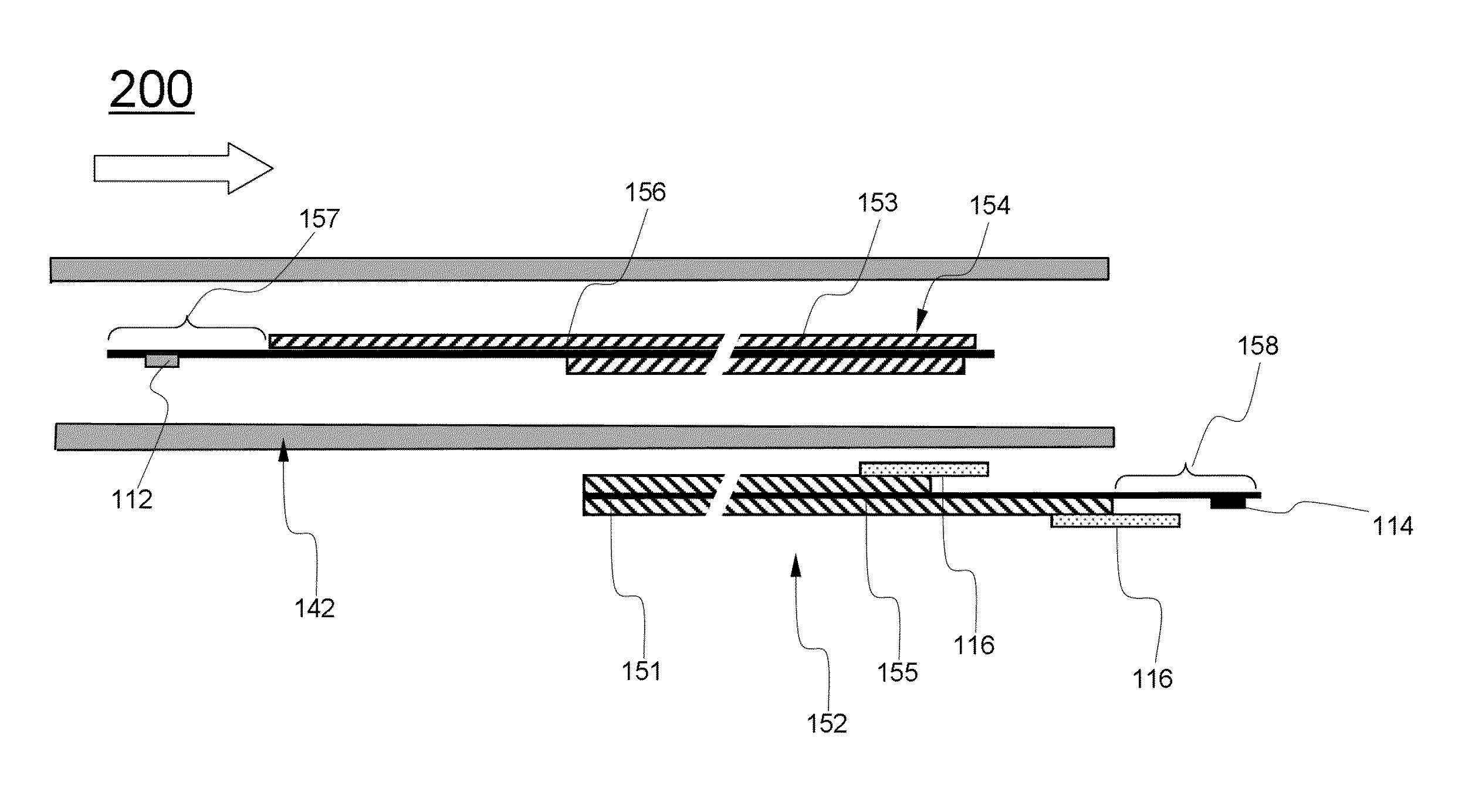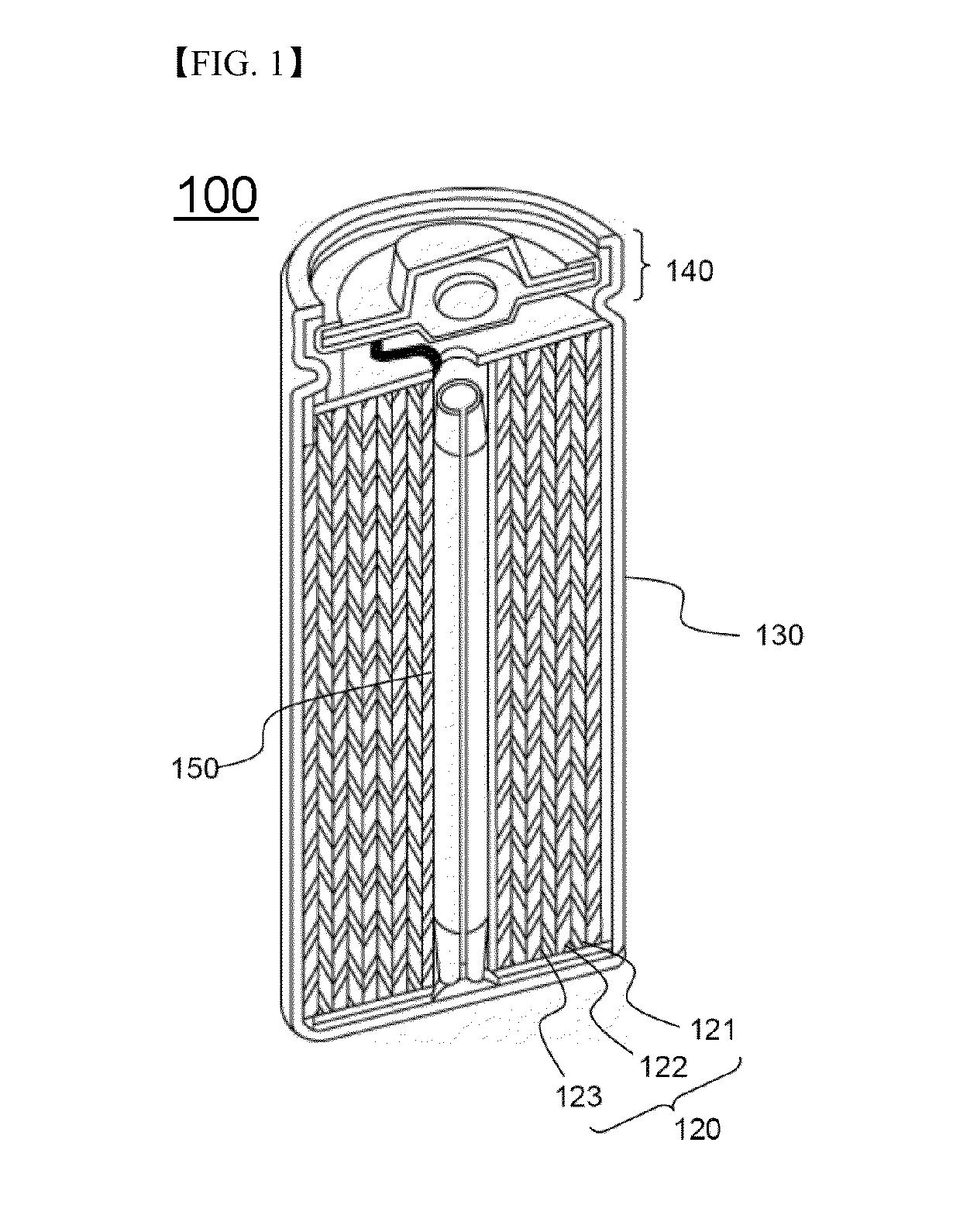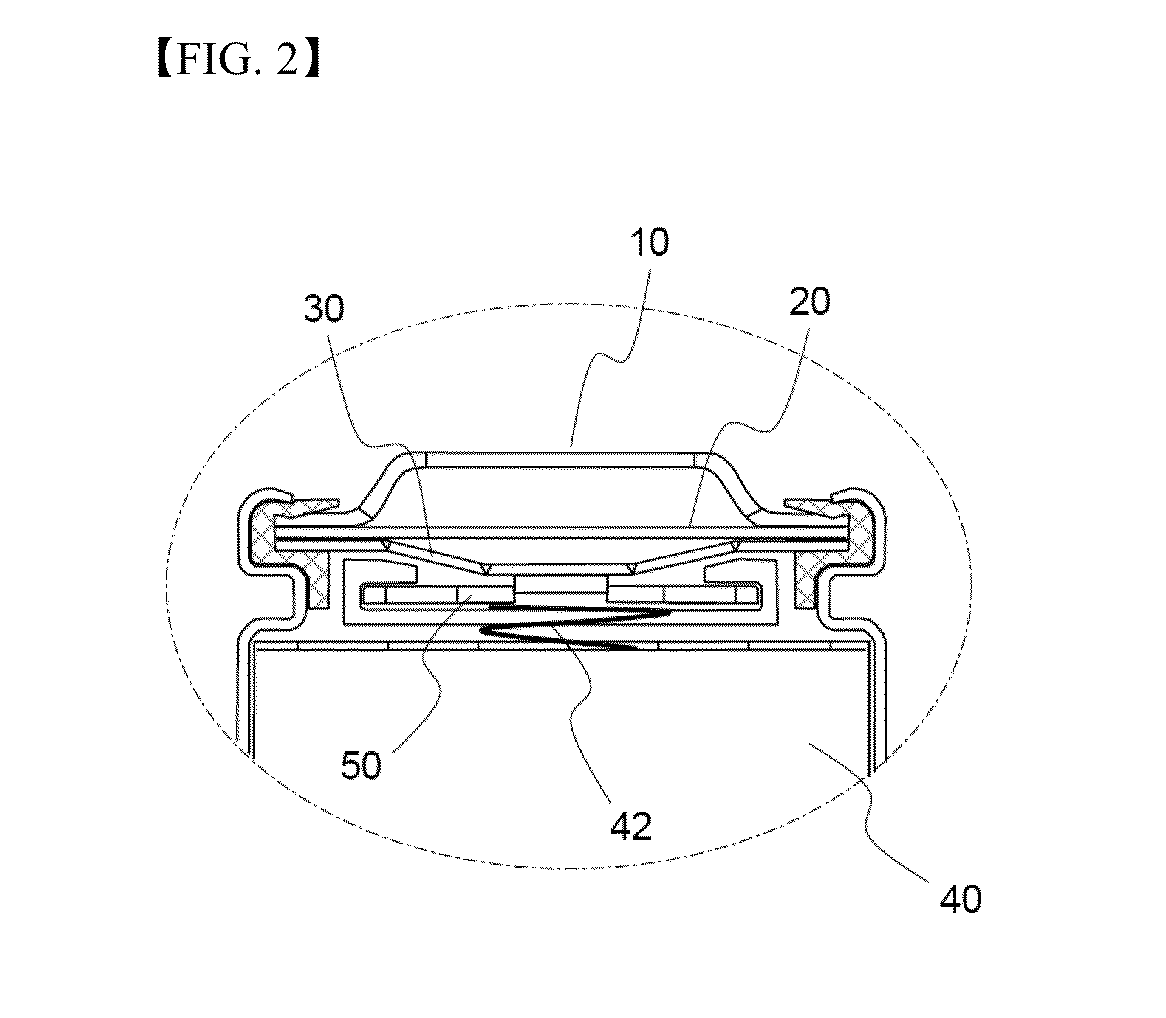Secondary battery of novel structure
- Summary
- Abstract
- Description
- Claims
- Application Information
AI Technical Summary
Benefits of technology
Problems solved by technology
Method used
Image
Examples
example 1
[0117]An anode lead of an alloy consisting of 96% Cu (based on a total content of elements), 3% Ni, and 1% Sn was manufactured, and a cathode lead made of Al was prepared. The cathode and anode leads were respectively coupled to uncoated portions of a cathode and an anode through ultrasonic welding, the cathode, the anode, and a separator disposed therebetween were wound to form a jelly-roll, the resulting structure was inserted into a cylindrical can made of stainless steel, and an electrolyte was injected thereinto, thereby completing fabrication of a battery cell.
example 2
[0118]A battery cell was manufactured in the same manner as in Example 1, except that an anode lead of an alloy consisting of 89% Cu, 10% Ni, and 1% Sn was fabricated.
experimental example 1
[0120]First, resistance and strength of the anode lead of each of the battery cells manufactured according to Examples 1 and 2 and Comparative Example 1 were measured. As a result of measurement, it was confirmed that the anode leads of the battery cells of Examples 1 and 2 had similar bonding strength to that of the anode lead of the battery cell of Comparative Example 1 and exhibited resistance reducing effects, i.e., reduction in resistance between about 10 and about 50%.
[0121]In addition, performance of the battery cells of Examples 1 and 2 and Comparative Example 1 after 100 charging / discharging cycles was tested. As a result of testing, it was confirmed that the battery cells of Examples 1 and 2 had an improvement on performance of approximately 10% or more.
[0122]Although the preferred embodiments of the present invention have been disclosed for illustrative purposes, those skilled in the art will appreciate that various modifications, additions and substitutions are possible,...
PUM
 Login to View More
Login to View More Abstract
Description
Claims
Application Information
 Login to View More
Login to View More - R&D
- Intellectual Property
- Life Sciences
- Materials
- Tech Scout
- Unparalleled Data Quality
- Higher Quality Content
- 60% Fewer Hallucinations
Browse by: Latest US Patents, China's latest patents, Technical Efficacy Thesaurus, Application Domain, Technology Topic, Popular Technical Reports.
© 2025 PatSnap. All rights reserved.Legal|Privacy policy|Modern Slavery Act Transparency Statement|Sitemap|About US| Contact US: help@patsnap.com



